On Gold Mountain: The One-Hundred-Year Odyssey of My Chinese-American Family Read online
Page 29
“There’s Jerry’s Joynt for ribs, steak, and lobster—American stuff,” Sissee said.
“I like Sam Yuen and See Yuen,” Tyrus added. Both restaurants served American food to Chinese families. The meals at these establishments were also cheap—roast pork, roast beef, soup with oyster crackers, coffee, fresh pie, and homemade salt-rising bread, all for just twenty-five cents, or thirty-five cents for a T-bone steak.
Someone mentioned that the Paris Cafe, a Chinese-owned establishment in the Gamier Building, had gone out of business, while the Paris Inn, an Italian restaurant, was still popular.
“What about the chop suey joints?” Stella asked.
“We won’t count those.”
“Okay, maybe seven good places that serve family-style meals in Chinatown,” Eddy said. “We would be number eight in the city, but we would be the best. We’ll have the best food. And look, I’m half lo fan! We’ll be the restaurant for Caucasians. We’ll cater to them.”
“I wonder if we could really pull it off,” Stella said.
Eddy went on. “This isn’t going to be just another place. It has to be the place. We’ll get in the society columns. We’ll bring in the Hollywood crowd.” Looking at the disbelieving faces, he asked, “Well, why not?”
No one had an answer. Then Benji muttered one syllable: “Art.”
Of course, that was it. Art would make this restaurant different.
“Benji can do murals,” Eddy said. “Tyrus will help.” And in those sentences the boss and his helper were established.
“I’ll need more than Tyrus.”
“Okay, so you’ll have more,” Eddy reassured him.
“So, Eddy, where’s it going to be?” Tyrus asked.
“Right here, Tyrus. Right here.” They looked around the basement at the bare brick walls dark with age, the exposed floor joists, the huge water pipes running along the ceiling, and the large gate valve in the center to turn the water on and off. Some might have been daunted, but this group was thrilled. Benji pushed away the remains of dinner, pulled out some paper, and began sketching. Ideas expanded and grew.
“We could knock down this wall,” Eddy said, thinking aloud.
“Good job for Tyrus,” Benji said.
“I’ll draw new menus every night,” Tyrus suggested.
“First you knock down the wall, then you do the menus.”
“I could be the hostess,” Sissee offered.
“We’ll have ice cream,” Eddy said. “Not the regular flavors, but lichee and ginger. We’ll find someone to make those up. No one in the city has ever had those flavors. They’ll be unique to us. We’ll call the place Dragon’s Den.”
“Long Gam Low,” Tyrus translated.
The gang worked on the plan until they felt it was ready to show to Eddy’s eldest brother for approval. Ming thought it was a bad idea. “You don’t know anything about the restaurant business,” Ming pointed out. “That’s a basement. No one wants to go to a basement to eat. No one wants to go downstairs. People like to go upstairs. They like nice places, not places filled with rats and dirt.”
At that, Ticie intervened. “Ming will give you the money.”
“Six hundred dollars, and not a penny more.”
That six hundred dollars—a fortune miraculously saved by the family during those cash-lean years—went a long way. Eddy borrowed two large marble Foo dogs from the store for the entrance. See Manufacturing made up tables and chairs, a cabinet to hold hats and coats, a cashier’s desk, and room dividers, all at cost. The furniture was done in pseudo-Chinese fashion: carved designs decorated the backs of the chairs, blue and white ceramic fish were used as pulls on the hat cabinet. The kitchen was outfitted with huge woks and a deep double sink. Dishes were purchased in bulk through the store. With Prohibition still on, the area that could have held a little bar—a freight elevator that led to the sidewalk—was converted to Eddy’s ice cream bar. He hired two waiters and two waitresses at a dollar a day, plus tips. He found four men to work in the kitchen—a head cook, a second cook, a fry cook, and a prep man. He hired others as dishwashers. The kitchen help would receive between forty and sixty dollars a month.
When the tongs came calling, offering protection, Eddy said, “You can kill me or do whatever you want, but just remember I have three brothers. No matter what happens, they’ll come and get you.” Later, when his friend told him how stupid he’d been, Eddy shot back, “Fuck the tong. If you have enough people to back you up, you don’t need them. Besides, they’re not as strong as they used to be.” Everyone hoped he was right.
Eddy let the artists conceive the overall design. Tyrus spent days knocking through the wall that divided the two dining rooms, leaving the edges jagged so that it looked like a dragon’s den. Another friend from art school, Marian Blanchard, painted the rough edges. In the end, people would laughingly remember that the most money was spent on paint. Gallon after gallon of primer, followed by imperial yellow enamel, sank into the porous brick. Again and again, Eddy went out for more cans of Du Pont Deluxe.
Benji’s perfectionism showed itself repeatedly as he supervised the crew made up of students from the Art Students’ League and Otis, as well as a few who worked for the WPA. The murals merged Japanese and Chinese styles and owed much to the teachings of Stanton Mac-Donald-Wright, who had said the West had to stop thinking in linear patterns. Western rationalism would never be the answer. The idea was to juxtapose different colors without using traditional western techniques of perspective to create an illusion of depth.
Benji, MacDonald-Wright’s most promising protégé, created his own mural on the raw brick walls of the basement. On one wall he painted the Eight Immortals, incorporating each of their symbols: the fan that Chung-li Chuan used to revive the souls of the dead; the sword that Lu Ting-pin, the scholar and recluse, used to rid the world of evil; the lotus of Ho Hsien-ku, who had eaten of the supernatural peach, become a fairy, and lived on powdered mother-of-pearl and moonbeams; the pilgrim’s gourd of the beggar Immortal Li Tieh-kuai; the castanets of Ts’ao Kup-chiu; the flute of Han Hsiang-tsu; the flower basket of Lan Ts’aiho; the bamboo instrument of the magical and often invisible Chang Kuo-lao. On another wall, Benji drew a large Buddha. On a third wall, a warrior fought a dragon. The way the dragon moved in and out of the clouds, with each scale perfectly rendered, was reminiscent of MacDonald-Wright’s WPA-sponsored mural in the Santa Monica Library.
Benji drew the outlines and his helpers filled them in. He was a fine colorist and the pigments glowed like jewels, but Benji was also finicky and stubborn. At the end of the day he would shout, “No, no. Not like that. Paint it out. Tomorrow we start over.” The next day, Benji would once again carefully draw the outlines of the Immortals, and his helpers would try to satisfy him. No one except Tyrus had the nerve to cross Benji.
“Geez, I know the Immortals have long earlobes, but these are very long.”
The next day the lobes would be drawn in even longer.
“Geez, I know the Eight Immortals have hair coming out of their nostrils and ears as a sign of longevity, but those are bushes.”
In response, Benji directed his minions to paint each hair in separate, long, perfect curls.
Dragon’s Den opened on February 1, 1935, to immediate acclaim. Los Angeles was still a relatively small city, and word of mouth traveled quickly. The arty crowd came to see the murals. Those who cared about food came to sample the “authentic” fare. Eddy served “family-style” meals, a concept still quite novel in America. Until the mid-1930s, Chinese restaurants were universally known as “chop suey joints,” and all Chinese food was called chop suey. At Dragon’s Den, a party could order an entire meal for fifty cents, seventy-five cents, or a dollar per person. The inexpensive dinner comprised soup, chow mein, Chinese peas with char siu, egg foo yung, fried shrimp, and rice. Prices for a la carte dishes were based on the size of the serving bowls of almond duck, sweet and sour pork, and soy-sauce chicken. These Americanized Chinese dishes�
��tame by today’s standards—were exotic and adventurous in the thirties. (But, as did most other restaurants in Chinatown, Eddy provided a separate menu printed in Chinese that listed more-authentic dishes, at more-authentic prices.)
The restaurant was hot, and that brought in the Hollywood crowd. On any given night, Sidney Greenstreet and Peter Lorre could be found at a back table dining together. Already those names meant something—mystery, adventure, a walk on the seamy side of life. But it wasn’t Casablanca. There was no search for a black bird. These celluloid images would come later. Walt Disney might be at another table with his entourage. Walt Disney—what an odd image that conjures up. But he was a man at the top of his form. So in our memories Disney must have had some other aspect to his character—not the all-American family-entertainment man, but a man who would go to Chinatown, step down into a dark basement, and treat a table of friends and colleagues to a fifty-cents-a-person family-style dinner of soup, almond duck, fried shrimp, and egg foo yung.
Between tables dotted with the well-known were others, aspiring artists who were mad about everything Chinese. To them, the See family seemed like a force. Dragon’s Den was art in Los Angeles. Others—the men and women who created illusion in Hollywood—came as part of their work. There were directors, producers, cameramen, costume designers, set designers, and set decorators. Upstairs, Milton and Ticie spent the day with them as they searched for authentic pieces to use in films. At dusk, Ticie would say, “Ming, they’ve been here so long. Why don’t you take them downstairs for a good Chinese meal?” And of course he would, because, skeptical as Ming had been, there was nothing like success, and the waiting line that wound up Marchessault and around the block onto Los Angeles Street bespoke success. This was good news to all of the Sees, for even now everything still went into the family pot—whether it was from the store, the factory, or the restaurant. As the Depression wore on, Dragon’s Den supported a total of five separate households.
To a different world the “different” came. Dragon’s Den became a haven for homosexual men and women. What other place in the city would accept them the way that Eddy and Sissee and Tyrus and Benji could? Who else would take them in, treat them with joshing respect, allow the individual preference?
No one ever took a photograph of the interior of Dragon’s Den—or if any were taken, they haven’t survived—and only in municipal archives do photographs of the exterior even exist. They show a brick building sloping down a hill, with the characters for “Dragon’s Den”—in Chinese and English—painted by Tyrus Wong along the side. But the rest—the murals, the people, the food—live only in a handful of memories tinted by nostalgia. Beyond these images of the concrete are the more ephemeral feelings imprinted on patrons of golden evenings, of love and mystery, of the conviction that they were in the world. In one sense, these perceptions are absolutely valid. In another, they are pure fantasy, illusions created by the camera of the mind, for just under the surface of this romantic façade a marriage threatened to fall apart.
When Stella had married Eddy, she’d thought her life would change. Then the Depression reversed the family’s fortunes. Instead of having a career or servants, traveling, dressing up, or going to nightclubs, Stella spent her days and nights on Maplewood. She worked hard to be a good mother, but it was a thankless job. She’d washed Richard’s diapers by hand with Fels Naphtha soap the way Grandma Copeland had taught her. She’d knitted and crocheted sweaters, hats, and blankets for him. As he’d grown older, Stella had sacrificed her love of art to spend hours with her son cutting out pictures from magazines with pinking shears and gluing them onto paper.
Stella had done what they told you to do in magazines, things she saw other mothers do. She’d stayed with Richard all the time. She’d been there when he woke up, when he got dressed, when he ate. She’d walked him to kindergarten and suffered when he cried every single day. She’d checked to see if he’d gone to the bathroom. She’d made sure he took his medicines for his allergies and asthma. Wasn’t that what mothers were supposed to do? Be with their children?
Still, she only had to look at others to see her own lack. Ticie adored the boy. The two of them would sit together in the kitchen, and Ticie would slather thick slabs of butter on crackers or toast, and Richard would dreamily eat them. Even Sissee, a spinster, was better at mothering than Stella was. She knew how to scold without hitting. She was stern without yelling. Once, when Richard said something naughty to his grandmother, Sissee took him aside and said, calmly but sternly, “Don’t speak that way to Grandma ever again.” He didn’t.
Why did one child, one husband, and no job create such a crushing burden for Stella? Because she had already been crushed by her childhood, by parents who had neglected her, by the lack of a formal education when she was such a bright and gifted artist. Because her hopes, her expectations, her dreams had been crushed. Because she spent her days in a hot little bungalow, crushed by a never-ending series of chores—washing and ironing for five, cooking for five, cleaning for five—with only a sickly child for company while all the time she thought her husband and mother- and sister-in-law were out and about having fun.
Stella had found solace in food, especially white food. It soothed her to have tapioca pudding, mashed potatoes, or thick buttermilk slip down her throat. The weight she’d gained when she was pregnant with Richard had never melted off as the baby books said it should. Instead it had grown—from 112 to 130, to 140, until she hit 154 pounds. If she ate like this, she must have been terribly unhappy. She also must have known that she was driving her husband away. When the doctor told Stella that she was pregnant again, she was momentarily happy. Then life—not surprisingly—conspired against her in the form of the outright knowledge of Helen Smith.
On February 15, 1935, two weeks after Dragon’s Den opened, Stella stood on the screened porch of the house at Maplewood Drive, sorting through the clothes to get them ready to wash. It was an unseasonably hot day in Los Angeles, and the muggy weather worsened Stella’s morning sickness. As she separated the whites from the colors, she fought her nausea by letting her mind drift from her chore. She gazed out at the lawns and swaying palm trees that lined the street. Absentmindedly she reached her hand down into the toes of socks and pulled them right side out or plucked bits of string, rocks, and other forgotten doodads from her son’s pants pockets.
She was calmly working this way, repeating her simple task with her husband’s pants—a receipt in this pocket, some coins in that—when she pulled out a piece of stationery folded over and over again into tiny squares. A feeling of dread crept over her. Somehow she knew what it would be, as she unfolded the paper crease by crease.
“Hello Ol’ Precious,” the note began. “How’s my valentine today? Thanks for the call. I answered quickly because my husband was home this a.m. Please let me hear from you later today. Hate to miss my call. Just in a happy mood since you made me so happy yesterday. Once a week means a heap to me. Perhaps you already know. Bye ol’ sweet. Expect call about 5:30 or 6:00.” The note was unsigned.
Stella started to scream. Her legs collapsed. Her heart broke. Her tears ran. Sissee and Ticie came running to the porch. “Are you all right? Is it the baby?” Stella tried to speak, but her voice was choked with sobs. She handed Sissee the note, and watched as her sister-in-law read the words. Sissee, who had long ago overcome her childish jealousy of Stella and had become her closest friend, set her mouth in a grim line. Her brother, Eddy, whom she loved the most of all of her brothers, had deceived them all. Ticie shook her head, her eyes filling with tears. That her son had hurt Stella—Ticie’s soul-daughter—was almost more than she could bear.
Sissee tried to pull Stella together. “Who do you think this woman is? Do we know her?”
“Helen Smith,” Stella said, and Sissee knew immediately that her sister-in-law was right.
How is it that a woman often knows exactly who her husband is fooling around with? Is it woman’s intuition? Is it that she perceives
some lack in herself and recognizes it in the other woman? Is it that she senses a subtle tone in her husband’s voice when he talks about the woman in question, or is it the peculiar silence that falls over conversation when that woman’s name comes up? For Stella, it was a little of all of these things, and in the months ahead she would berate herself over and over for not saying or doing something sooner.
Helen Smith, like so many of the better customers, liked to hang around the store. Only instead of spending time with Ticie, she seemed to prefer to linger at Eddy’s jewelry table. She asked him to make her picture frames. People always asked Eddy to make things, so this hadn’t seemed strange to Stella. Nor had she thought twice about it when Eddy went up to the Smith house to deliver the frames. That was what all the boys did.
This past Christmas, Stella had sent a doll to Helen’s daughter in appreciation for her parents’ patronage, and Ticie and Sissee had sent the Smiths a teapot. The thank-you note from Mrs. Smith was predictable: “The teapot is just precious and matches beautifully with our other pewter. We shall think of you both whenever we use it. Thanks just heaps and heaps.” Stella’s letter from the daughter was quite different in tone. “You stupid fool,” it began. At that point Stella could have done a lot of things—spoken to Helen or shown the note to Eddy; instead she chose to dismiss the episode—the girl obviously had problems.

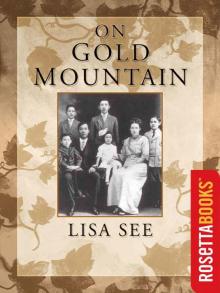 On Gold Mountain: The One-Hundred-Year Odyssey of My Chinese-American Family
On Gold Mountain: The One-Hundred-Year Odyssey of My Chinese-American Family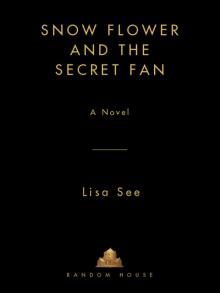 Snow Flower and the Secret Fan
Snow Flower and the Secret Fan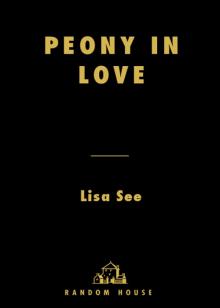 Peony in Love
Peony in Love Flower Net
Flower Net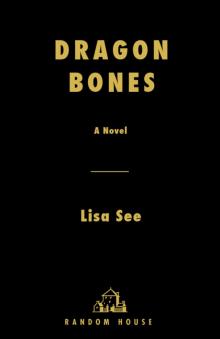 Dragon Bones
Dragon Bones Shanghai Girls
Shanghai Girls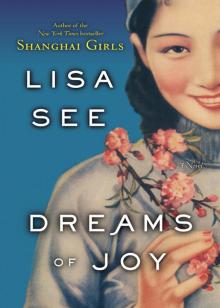 Dreams of Joy
Dreams of Joy The Island of Sea Women
The Island of Sea Women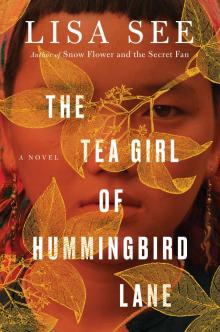 The Tea Girl of Hummingbird Lane
The Tea Girl of Hummingbird Lane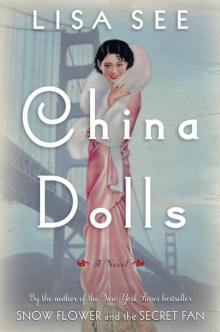 China Dolls
China Dolls The Interior
The Interior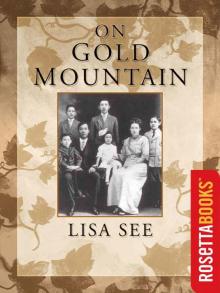 On Gold Mountain
On Gold Mountain